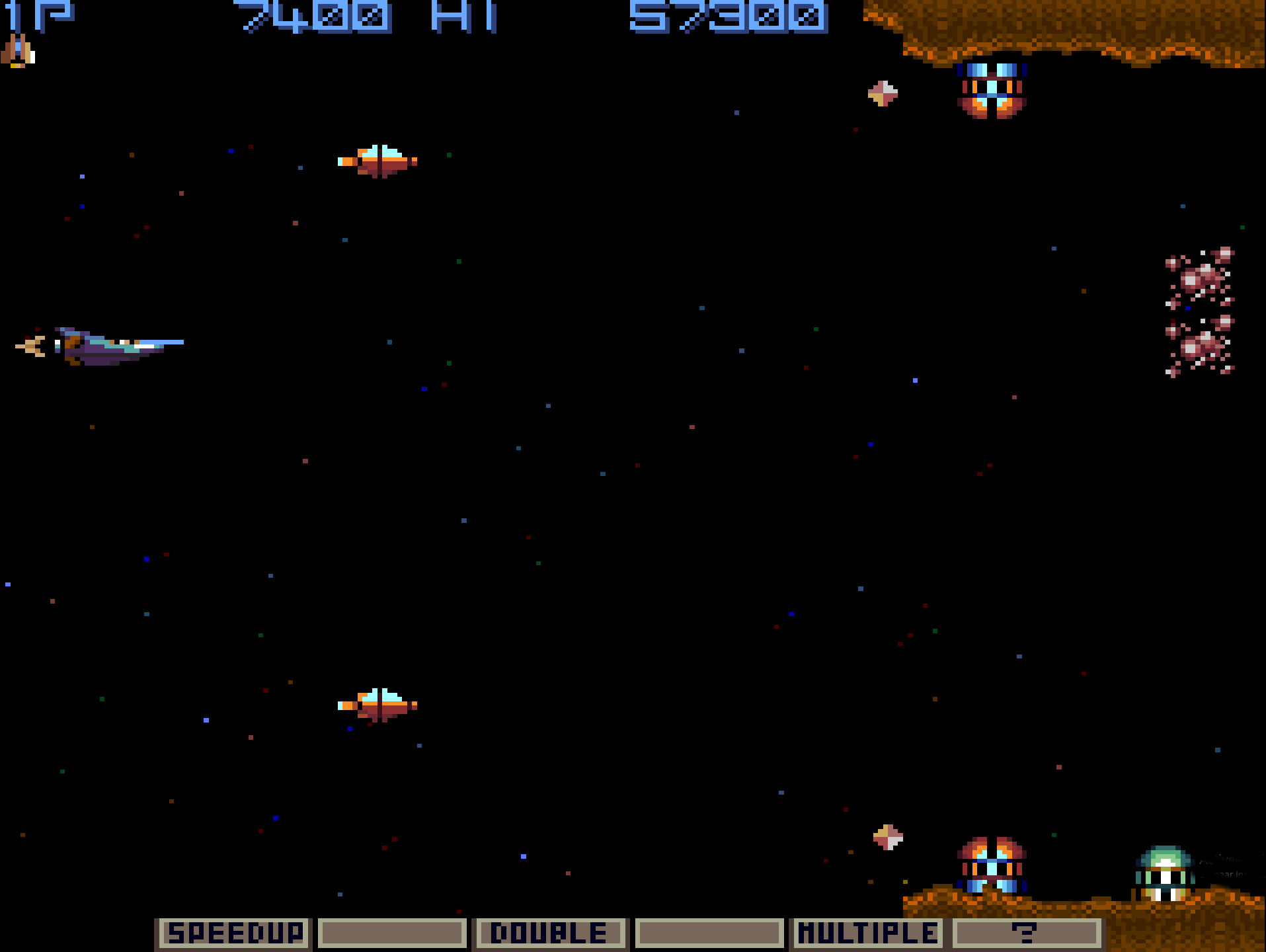Introduction
Released in 1985, Gradius—distributed in many regions under the title Nemesis—redefined the horizontal shoot-’em-up. Developed and published by Konami, it introduced the now‑iconic power‑up selection meter and the Vic Viper starfighter, blending precise controls, memorization, and strategic loadout choices into a blueprint that countless arcade shooters would follow.
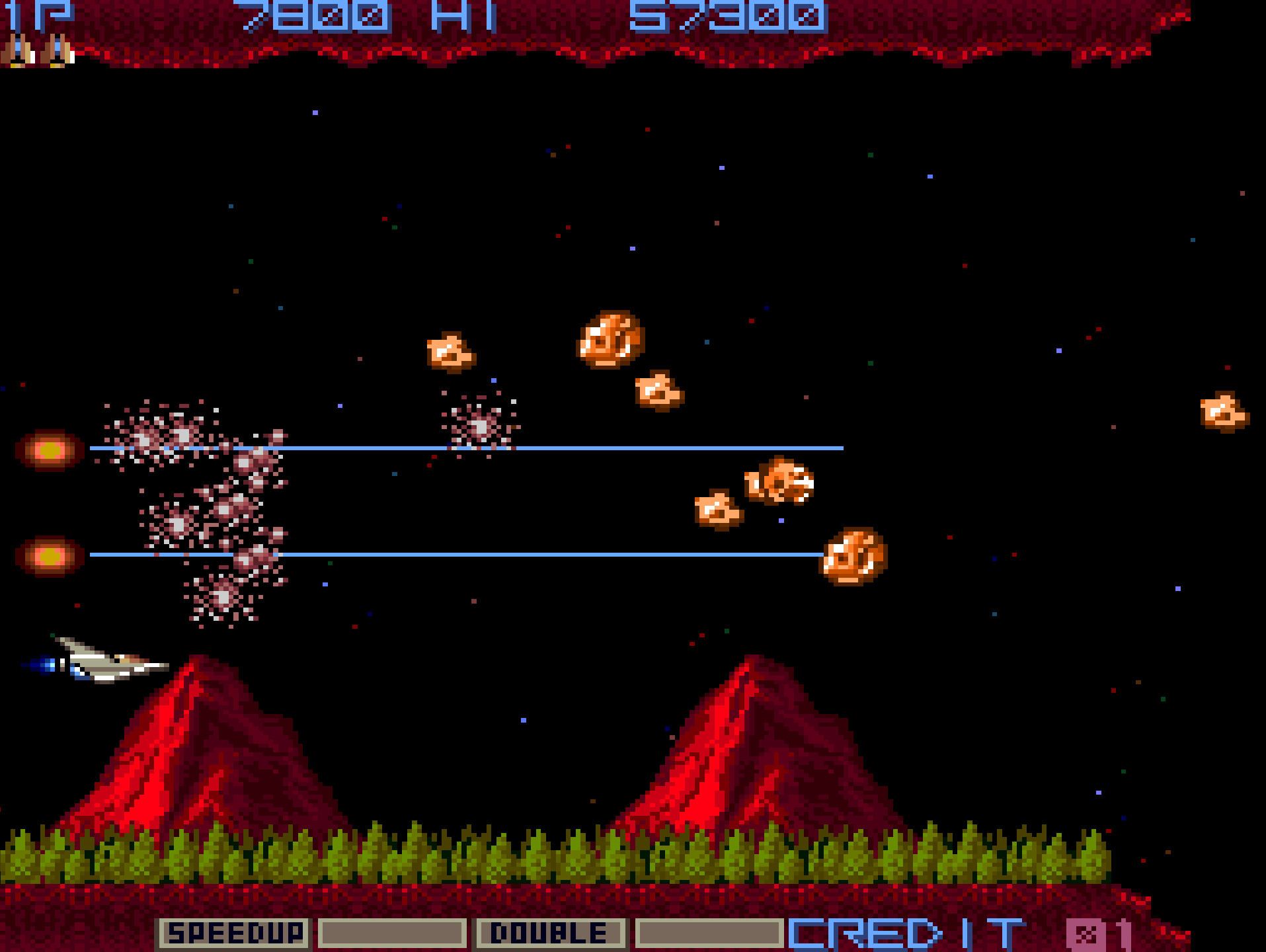
Development and History
- Developer: Konami
- Publisher: Konami
- Release Date: 1985
Konami launched the game in Japan as Gradius and exported it widely as Nemesis in Europe and other markets. Beyond a name change, the arcade game itself was the same: a fast, horizontally scrolling shooter with stage‑by‑stage difficulty ramps and memorable boss encounters. Building on lessons from earlier Konami shooters, the team’s key innovation was giving players control over when—and how—to power up, creating a risk‑reward rhythm that distinguished Gradius from contemporaries.
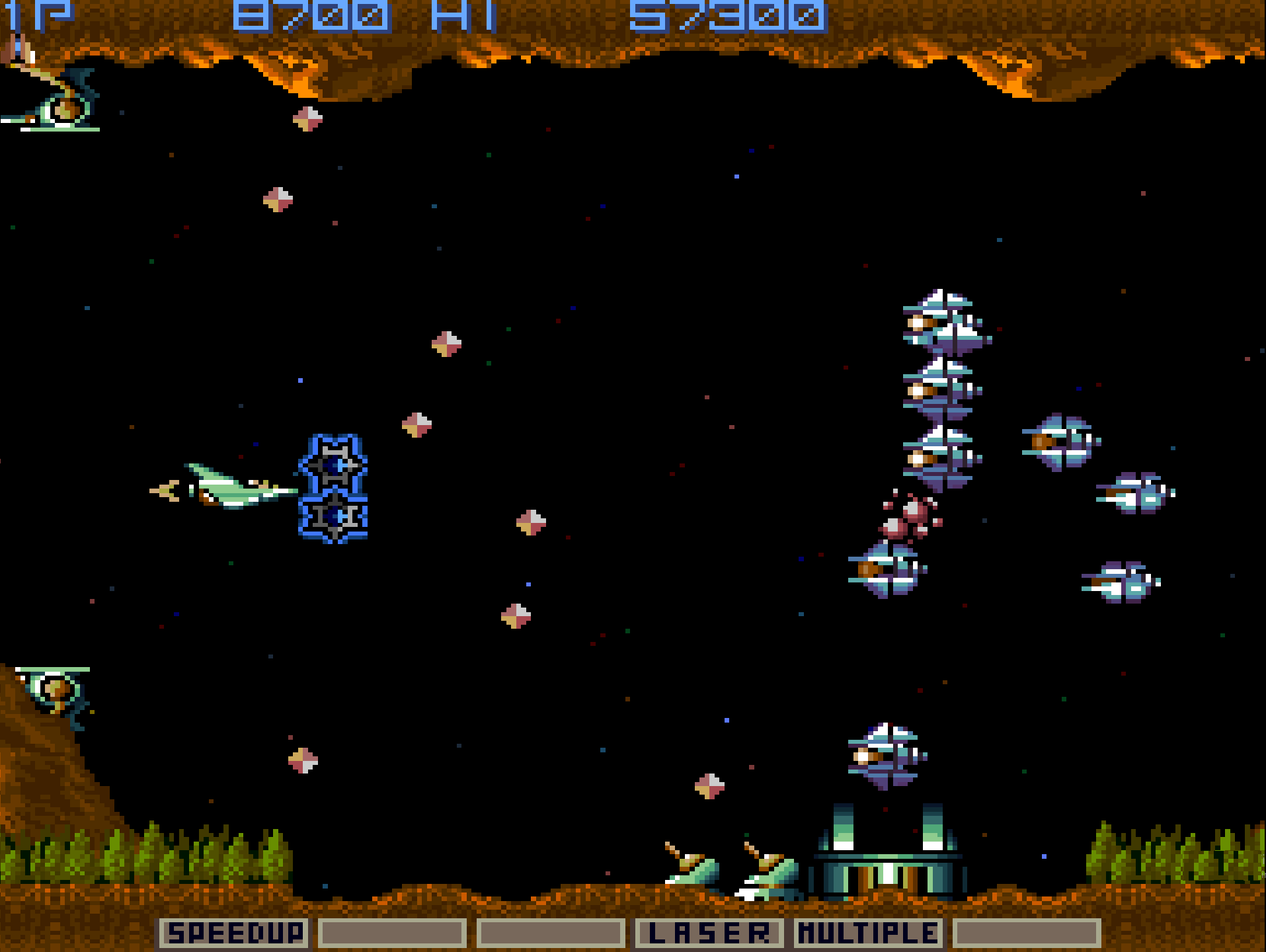
Gameplay Video
Gameplay and Mechanics
- Power‑Up Meter: Defeated enemies drop capsules that advance a selection bar (Speed‑Up, Missile, Double, Laser, Option, Shield). Players choose when to spend a capsule to activate specific upgrades.
- Vic Viper: The player’s ship becomes highly customizable via the meter, especially with “Options” (satellite pods) that mirror the ship’s fire for stacked firepower.
- Horizontal Scrolling Stages: Carefully designed levels mix terrain hazards with enemy waves, rewarding route knowledge and precise positioning.
- Signature Foes & Bosses: From the ring‑spitting Moai heads to the shielded “Core” bosses, enemy patterns encourage both pattern learning and aggression.
- Escalating Challenge: Success increases enemy intensity; survival often hinges on maintaining your upgrade chain after deaths.

Cultural Impact and Legacy
Gradius set the standard for horizontal shooters throughout the late ’80s and ’90s. Its selectable power‑up system, “Options,” and set‑piece boss fights became hallmarks not only of the long‑running Gradius series but of the genre at large. The game’s success led to numerous sequels and spin‑offs (including Salamander/Life Force) and widespread home conversions, cementing Gradius as one of Konami’s most influential arcade franchises.
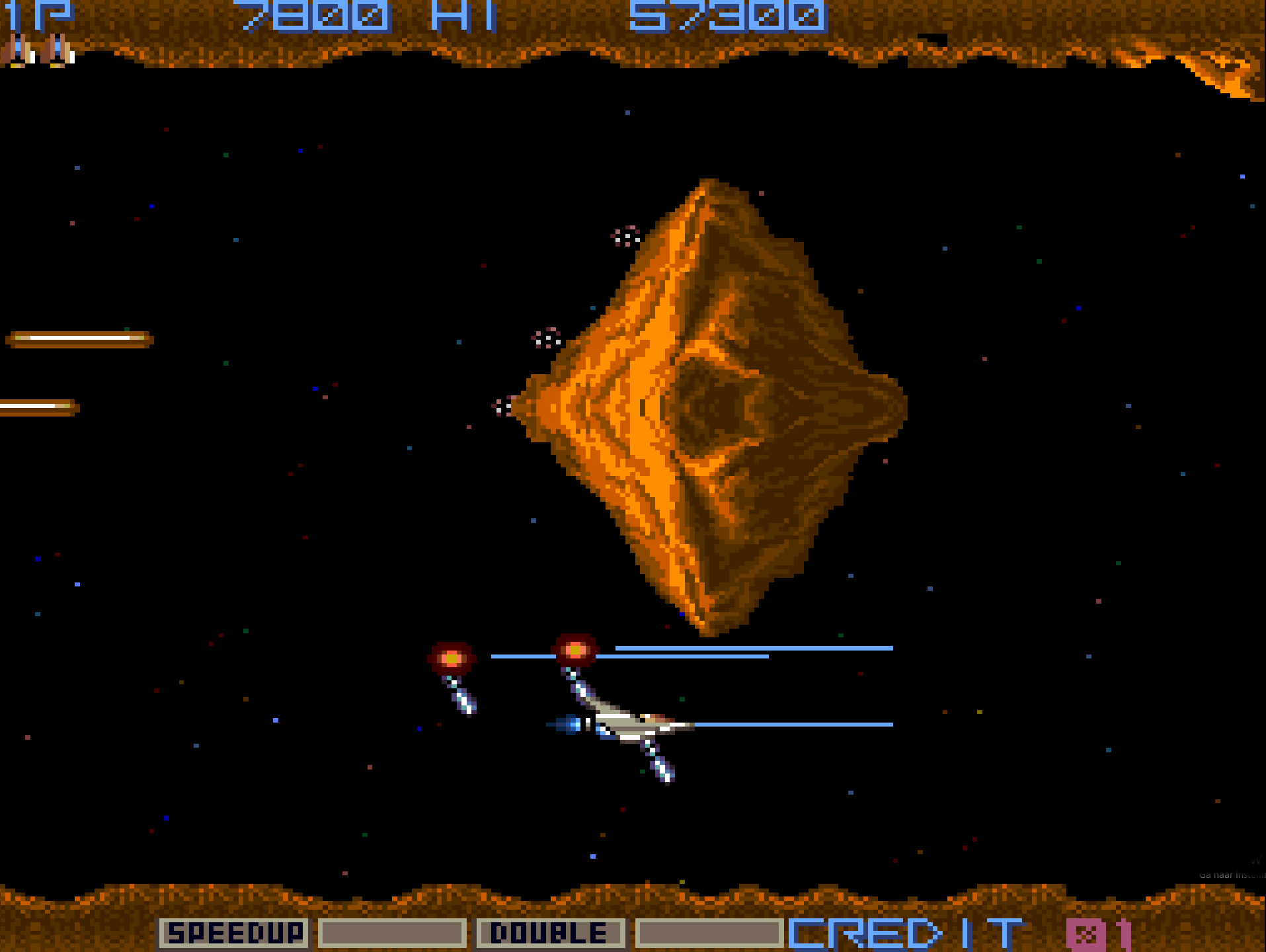
Fun Facts
- Outside Japan, the original arcade release was commonly titled Nemesis; later entries standardized on the Gradius name worldwide.
- The “Option” satellites fundamentally changed shooter offense—stacking them transformed the Vic Viper into a mobile barrage.
- Moai head enemies became a quirky series staple, reappearing in later Gradius titles and spin‑offs.
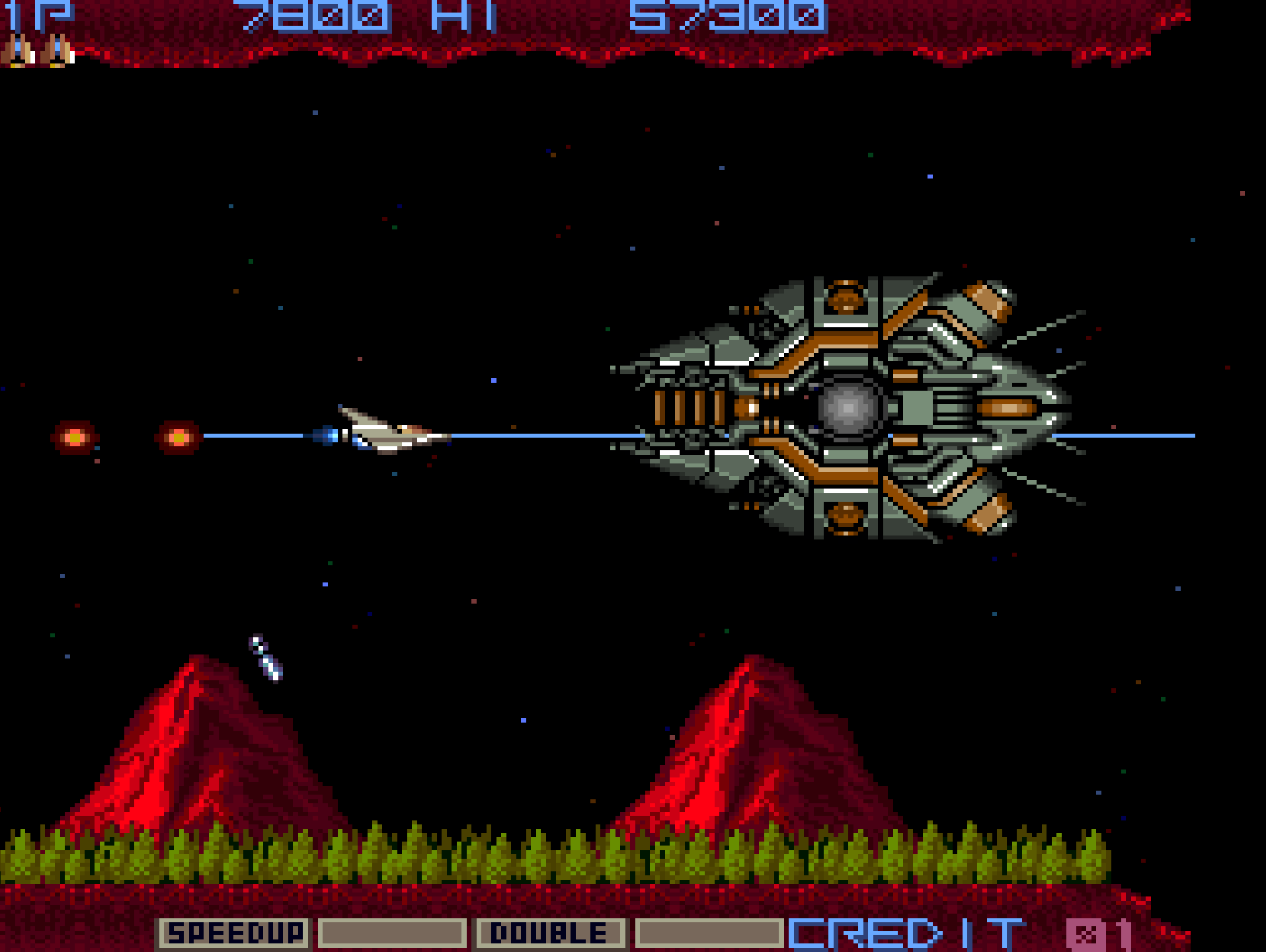
Conclusion
Gradius perfected a balance of strategy and reflex, letting players sculpt their arsenal on the fly while navigating tightly curated stages and bosses. Whether you first knew it as Gradius or Nemesis, its design innovations still echo through modern shooters—making it essential arcade history.
Want to Go Deeper Into Arcade History?
If this game left you craving more, dive into the complete stories behind some of the most iconic arcade genres and franchises. These articles explore the rise, innovation, and legacy of the games that shaped arcade culture:
- Top 25 Hidden Gem Arcade Games of All Time - Unearth the overlooked classics that still shine bright for arcade enthusiasts today
- Top 25 Beat ’Em Up Arcade Games of All Time – Discover the ultimate ranking of the greatest beat ’em ups ever to hit arcades
- The History of Beat ’Em Up Arcade Games – From Double Dragon to Final Fight, here’s how brawlers ruled the late ’80s.
- Donkey Kong’s Rise to Fame: How a Desperate Bet Created a Gaming Legend – The untold story of how Nintendo turned failure into a global icon, launching Mario, Miyamoto, and a new era of arcade storytelling
- The Economics of Arcade Gaming: The Golden Age of Coin-Op – This article explores the full arc of arcade economics: the explosive rise, the industry-shaking crash, and the waves of reinvention that kept the business alive
- The Complete History of Mortal Kombat Arcade – How a gritty fighter became a pop culture phenomenon.

